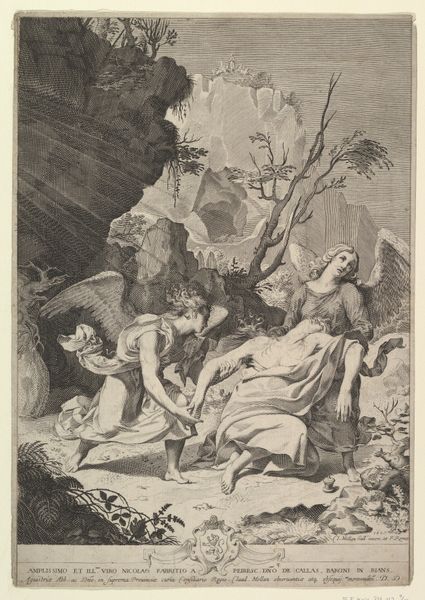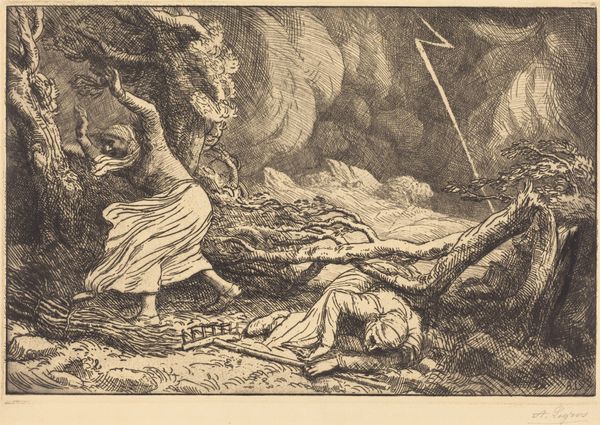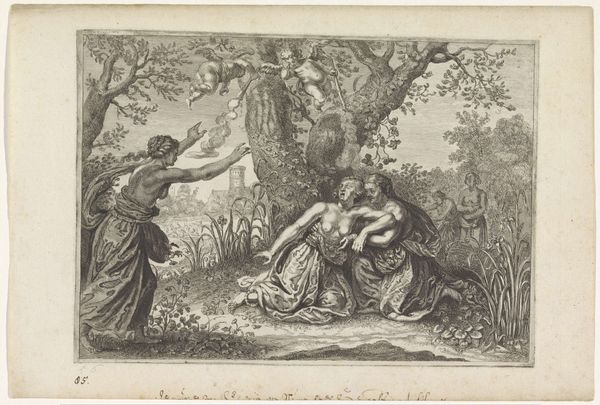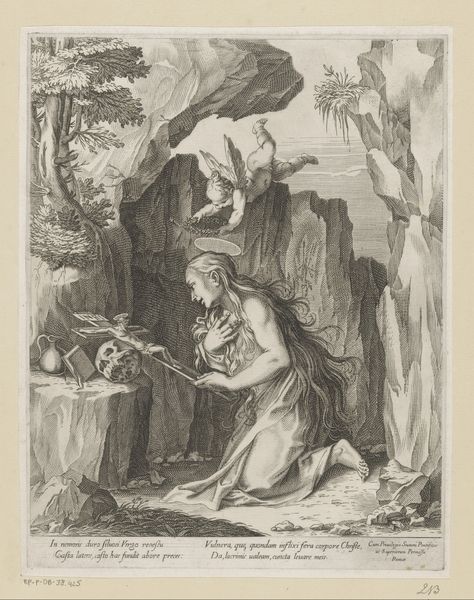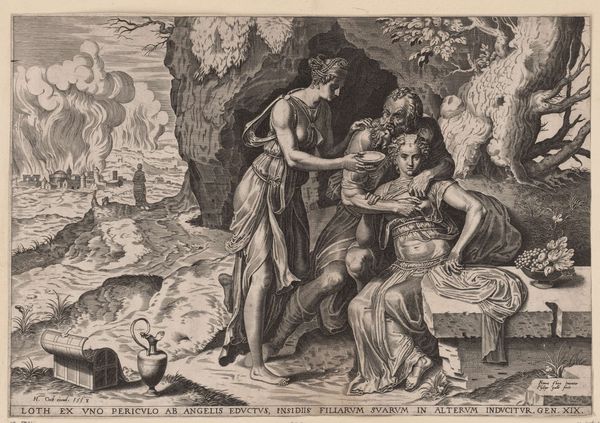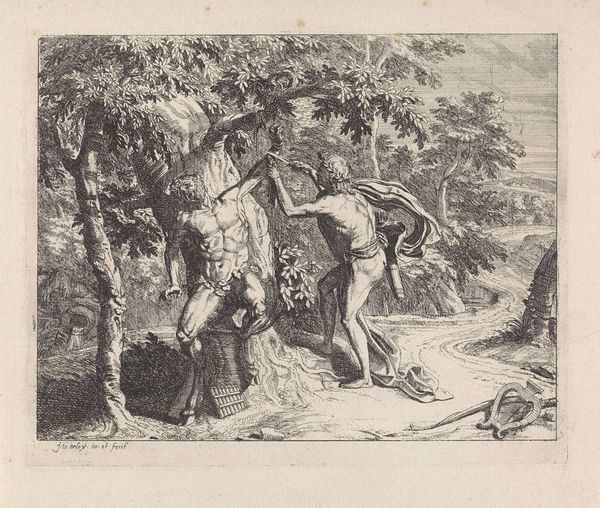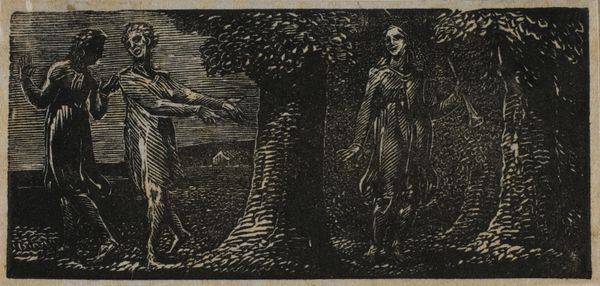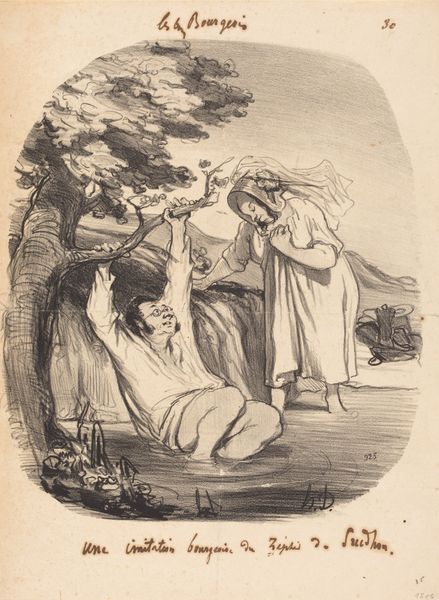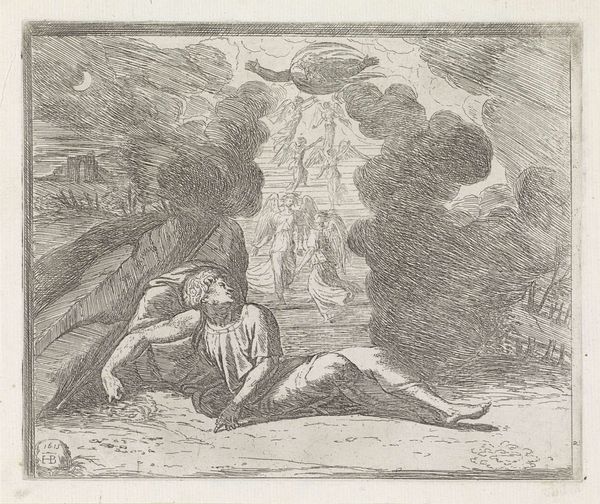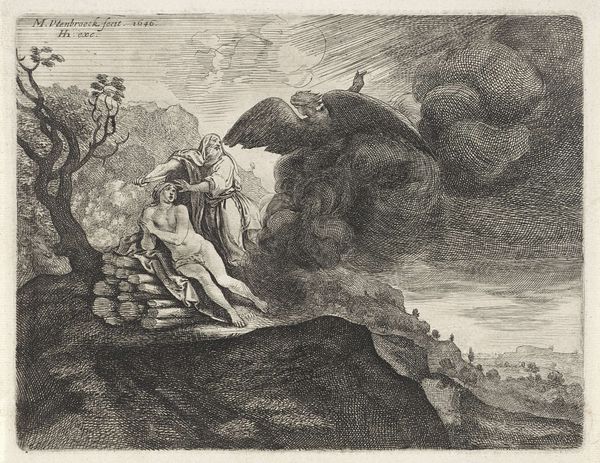
Dimensions: 81 mm (height) x 97 mm (width) (bladmaal)
Curator: Welcome. The artwork before you, titled "Abels drab," was created by Peter Haas in 1781. It's an engraving currently held at the SMK, Statens Museum for Kunst. Editor: Wow, it's moody! Dark, almost violently contrasted. Is that lightning in the background? It feels… biblical? Curator: Indeed. This piece depicts the biblical story of Cain slaying Abel. Note the composition: the lifeless body in the foreground, Cain fleeing, and the divine wrath symbolized by lightning, highlighting themes of transgression and divine punishment. From a postcolonial studies lens, the portrayal, even in the late 18th century, perpetuated power dynamics tied to innocence and guilt. Editor: Makes you think, doesn't it? The vulnerability is right there on the ground. Yet there’s this chaotic energy radiating off Cain; his pose is so... unsettled. I wonder what Peter Haas was trying to convey about brotherhood or the human condition, you know? Curator: Within a baroque landscape, Haas invokes classic figuration, yet destabilizes established patriarchal interpretations of justice and morality by inviting subjective encounters between viewers and socially inscribed violence. Feminist art historians have dissected depictions like this to address pervasive misogyny through the centuries; "Abels drab," I suggest, continues to echo patriarchal constructions despite Haas's attempts at nuanced visualization. Editor: Gosh! Looking at this piece – and all that history packed into a print made centuries ago - sparks so many thoughts. If art can create even half of such conversations as this little old etching just has... then maybe art is close to magic. What do you reckon? Curator: If art invites meaningful discourse towards re-visioning oppressive constructs, especially using intersections with class, religion, race and gender, I embrace that "magic" wholeheartedly!
Comments
No comments
Be the first to comment and join the conversation on the ultimate creative platform.
